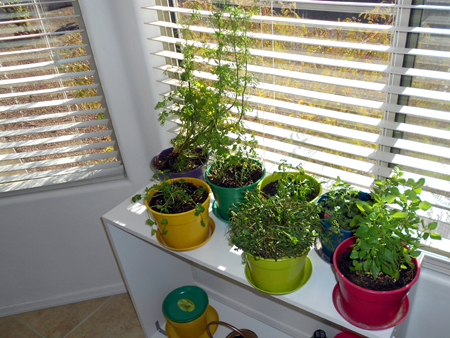
Here’s my review of the Cuisinart® Griddler Gourmet® countertop grill. The Griddler is advertised as an “all-in-one” appliance, combining contact grill, Panini press, full grill, full griddle, and half-grill/half-griddle options.
I purchased the Griddler recently as an alternative to stovetop grilling (okay, it was mostly an impulse purchase). Initially, I had some misgivings about a product sold as performing multiple tasks; it’s been my experience that they usually don’t perform any of the advertised tasks very well – or at least not as well as a single-purpose item. But after using the unit for some weeks now, I’m quickly becoming a convert.
The Griddler’s controls are not as intuitive as I’d like – there are three controls on the front of the unit: Selector, Griddle, and Grill-Panini. First, you must select what you intend to cook, and then use one of the other dials to select temperature. Adding to the confusion is the fact that the griddle temp is set in degrees F., but the grill temp ranges from Warm to Sear. And, if you want to use the unit as a half-grill/half-griddle, you can use either temperature control. Got it? Me neither…
One of the great features of this device is the reversible grill plates, which boast a non-stick coating. One side of each plate has a standard grill layout, so you’ll always get attractive grill marks on your creations. The other side is simply a flat-top griddle. Flipping the grill plates couldn’t be simpler, thanks to easy-release buttons top and bottom. The plates are also dishwasher-safe, and clean up easily and well.
Another feature worth noting is the floating hinge – this is how the Griddler is able to grill items of varying thickness while maintaining full contact with the cooking surface. It’s a simple gizmo, actually… an additional pivot point on the top half of the unit. But it works quite well for thicker meats, etc., and I’ve found that it will handle thick sandwiches with ease. A button locks and unlocks the pivot.
It takes less than 10 minutes to bring the Griddler up to temperature once you figure out which knob turns it on. Bi-color LEDs change from red to green when the temperature setpoint is reached. Power consumption is a reasonable 1500 watts (about the same as the average blow dryer) and the power cord stays cool during the entire cooking session.
Performance of the appliance, in my opinion, falls somewhere between good and very good, which means that it meets most of my needs. I’ve used it several times for various grilling/griddling jobs, with consistently good results. Obviously, certain jobs are best left to more conventional cooking methods, but overall, the results met my expectations. The Griddler has a removable drip tray (also dishwasher-safe) which purports to catch grease and other liquids generated as a result of grilling. Sadly, it doesn’t work. The unit depends on gravity to route drippings to the rear of the grill plates, where it’s supposed to run into the tray. But instead, liquid seems to just stay in the spaces between the grill bars. Of course, elevating the front of the unit slightly would help, but modifications such as this shouldn’t be necessary – so I’ll categorize this as a design flaw.
Nevertheless, I won’t hesitate to recommend the Griddler, at least until I have something to compare it to (which probably won’t happen, since this appliance does all I need it to do).
One final recommendation – for about 40 bucks, Cuisinart sells a pair of extra plates for making Belgian waffles on the Griddler – so if you’re a waffle fan, I’d suggest making the extra investment, thus eliminating the need for an additional appliance.










